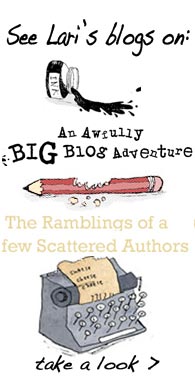|
Filled under: Uncategorized | | Trackback
When does a story become a book? Anyone who has come to my author events and seen one of my manuscripts will know just how MESSY they are, because I tend to write the story all in a rush of enthusiasm and excitement, and then I have to do a lot of work tidying it up. Turning the story, slowly, painstakingly, into a book. But when does the story actually become a book? For me, I think it’s when I’ve stopped being able to fiddle with it.
With Storm Singing, the third Fabled Beast book, that moment has just arrived. Right now I’m printing out the page layouts from the publisher. These aren’t pages of text covering whole sheets of A4 paper, but blocks of text the size of novel pages, with lots of white space round them. And they do look like real pages! Page numbers at the bottom, proper chapter breaks. It looks like a book! And I can’t fiddle with it any more. I can point out spelling mistakes or missing apostrophes (I can get quite passionate about apostrophes) but I can’t suddenly change the outcome of a fight, or introduce an entirely new character, or even decide that a line of dialogue doesn’t work. I can’t fiddle with it, it’s printing out looking like real pages from a real book, and I think it’s nearly ready!
But you can’t read it for another – let me count – nine and a bit weeks. Because it’s still got to go to the printers, then come back and get put on the bookshop or library shelves. But you can look at the cover on Floris’s website. I love the cover! (But don’t read the blurb under it – it gives away a LOT of the plot. Better wait til the story, which is now a book, comes out!)
Now I’m off to hunt down stray apostrophes …
Permalink
Leave a Reply
|


We’re going on an apostrophe hut!
We’re going to catch a big one!
I think you mean Apostrophe HUNT, but I like Apostrophe Hut better. I’m seeing a shed, filled with battered old drawers of missed apostrophes, and shopping bags of the extra ones that you see in shop windows. And embroidered homilies on the wall about the difference between It’s and Its, and whether Floris’s or Floris’ is correct. And in the rest of the park: a marquee with some refined, educated and very pleased with themselves semicolons; a site office with a staff of organised list-making colons; fullstops standing at the gate marked ‘No Exit’, with their arms crossed; exclamation marks bouncing about on the lawn; commas, in pairs of course, taking a breather on some deckchairs; ellipses escaping into the bushes, never to be seen again …
That was fun, if very daft. Thank you for prompting it! Any other ideas for where punctuation marks like to hang out and what they do there, sensible or silly, please do share!
There’s a punctuation hospital with a ward for comma patients, many of whom are suffering from a bad splice. There’s another ward for colon surgery, and in an emergency you will see doctors in a dash. Speech marks are what you find on the inside of a surgeon’s mask (especally the one who invented commas).
The asterisk is a musical instrument played with the feet (you guessed it: it’s for making foot-notes!)
There is punctualtion in space: you get elipses of the sun and moon.
Brackets are supported by the Positive Parentheses Partnership.
And there’s a question mark over all of the above.
How do I know all this? I paid attention in school! I had pun-tuition!